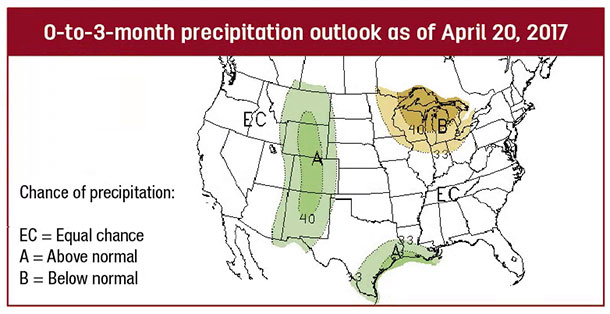Infection rates of cool-season worms (e.g., Ostertagia) are high in March through May in the southern U.S., but infection rates go down considerably during the hot, dry summer months. By treating cattle when infection rates are lower, it enables the herd to have less worms for a longer period.
The diversity in Kansas, Oklahoma and Texas dictate that the best approach will vary across these states. For example, producers in higher-rainfall areas of Kansas may want to consider two strategic treatments per year for beef cows, once about April or six weeks after spring green-up and again in November.
Producers in East Texas should also consider two treatments, but because of differences in the growing season, late May or early June is generally better for the first treatment. In contrast, producers in parts of Texas with low rainfall who may be stocked at one cow per 100 acres may not need to deworm annually.
As new products come on the market with longer persistent activity, the most appropriate timing of treatment may change. If using these products, consider treating earlier in the spring.

Several factors should be considered when choosing a dewormer: application considerations, persistent activity, cost, efficacy, worm species controlled, label restrictions and chemical family.
The two most commonly used chemical families are the macrocyclic lactones (e.g., Cydectin, Eprinex, Dectomax and Long Range) and the benzimidazoles (e.g., Valbenzen, Synanthic, Safe-Guard and Panacur).
For pour-on products, check the label to see if they are flammable or impacted by rain, as this may influence your product choice. Additionally, slaughter withdrawals can range from zero to 48 days or more; products with zero withdrawal may be preferred from a BQA and marketing standpoint.
Cooperia are generally not a problem in cattle over a year old but can be a problem for younger animals. Most Cooperia species are transmitted during the summer, so the use of a benzimidazole this fall around weaning could prove valuable in younger animals.
The best plan will vary for each operation, so work with your veterinarian and extension beef cattle specialist to develop a successful plan for your operation. ![]()

-
Jason Banta
- Associate Professor and Extension Beef Cattle Specialist
- Texas A&M University
- Email Jason Banta







